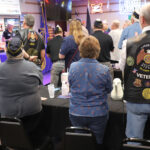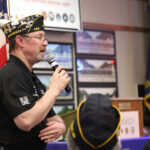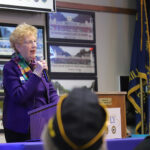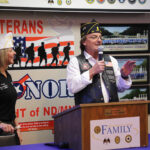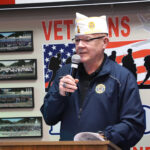National Commander Seehafer speaks at Moorhead Post 21
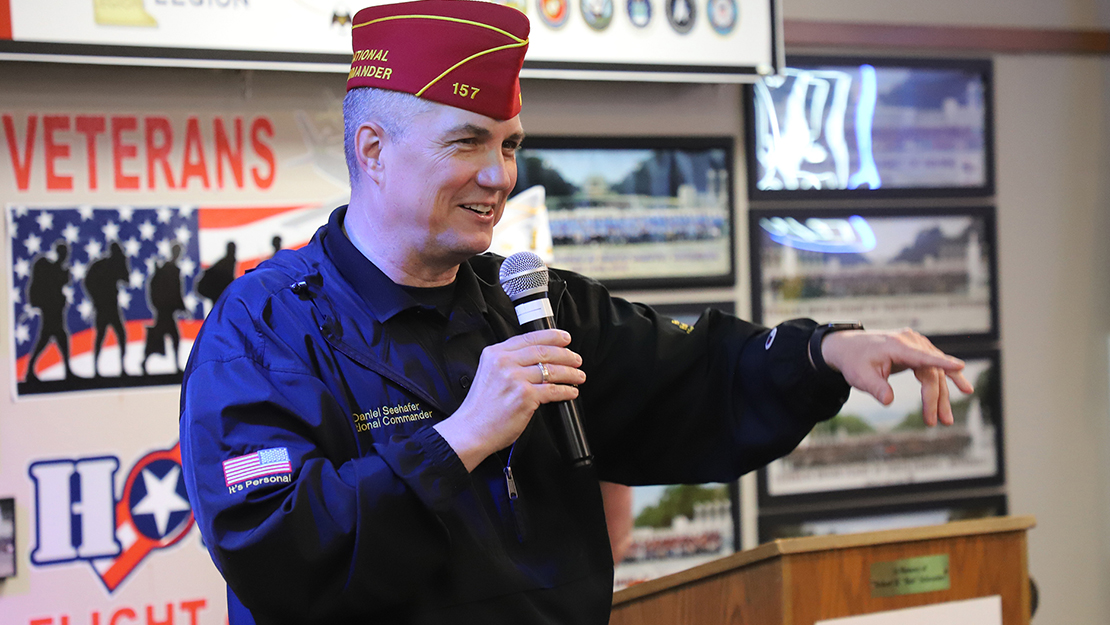
He answers the age-old question possible joiners sometimes ask, ‘What’s in it for me?’
MOORHEAD — Purpose and relevance.
American Legion National Commander Daniel J. Seehafer was humbled by the Vietnamese leadership and people during his visit to the country in December.
“They marvel at how we take care of veterans. They value the relationship between these two nations,” he told about 115 members of the American Legion Family at Moorhead Post 21 on Sunday, April 14, on the first stop of the National Commander’s Tour of Minnesota.
So what does the United States do when ask? Seehafer said we share our knowledge.
“It’s what we call Americanism,” he said.
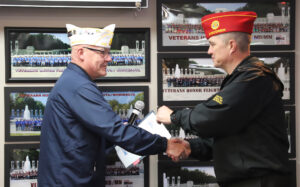
The Legion Family ranged from longtime Legionnaires who posted the colors to the boys on the Moorhead Blues and Golds baseball teams who served.
The ever-fantastic America Legion 9th District Band warmed up the room with patriotic music.
Some veterans, when asked to join The American Legion, ask, “What’s that?” Some others ask,
“What’s in it for me?”
Seehafer told a story about two fighter jets in Vietnam in 1968. One was shot down. The other pilot spotted no ejection and no parachute but recorded the location. There was an attempt to recover the body later on, but it was enemy territory.
Fast forward to 2023. With offices in Hawaii, the Defense POW/MIA Accounting Agency is in charge of finding American remains in Vietnam.
“If it wasn’t for The American Legion, that agency would be gone,” Seehafer said.
DPAA found the wreckage and site, and Seehafer went with them to the remains of the pilot. They found the remains.

“Imagine if that’s you,” he said, regarding the “What’s in it for me?” person. “Do you want your country to say, ‘So be it.”
The POW/MIA flag is not just a “cool flag” hung at American Legion meetings, he said. It is symbolic of the Legion’s purpose and relevance.
“The ability to be brought back and laid to rest on American soil is our mission,” Seehafer said.
In the veterans’ community, many numbers are spoken in regard to veteran suicide, he said.
There is the well-known 22 per day. There are statistics that put it at 17 or 18. Other figures put it as high as 44. Seehafer said the number might be as high as 150 if the entire family and friends support system for veterans is considered.
“We would say 1 is way too many. We made this our mission, to save one at a time,” Seehafer said.
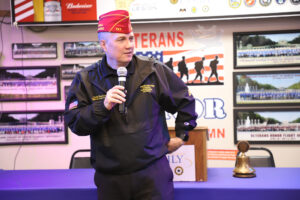
The national commander told a story of how a veteran in a wheelchair wheeled himself into a veterans club and asked for some help. A man in the back overhead his plea and spoke up: “Son, I fought my war. Can’t fight yours.”
“I pray that never comes out of the mouths of our family members,” Seehafer said.
That wheelchair-bound veteran chose suicide. The revolver clicked not once but twice. The weapon didn’t fire.
“I know who was watching over his situation,” said Seehafer, a Lutheran pastor from Wisconsin.
He said a post with a strong character, much like Moorhead Post 21, got the man the resources he needed.
“It changed his life and saved his life. That’s The American Legion,” Seehafer said.
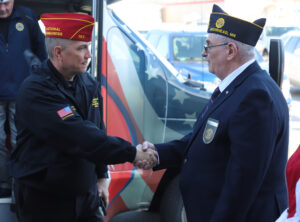
Life has its ups and downs, but members of the Legion Family have each other. It’s not just a social club. There is a purpose and a relevance to what the Legion and the entire Legion Family does. Every member might be the difference between life and death for a veteran, he said.
He praised Moorhead Post 21 for the excellent job it did hosting him and the rest of the touring party. Many donations were made to the National Commander’s Project, which is the American Legion Veterans & Children’s Fund.
The commander heads to Fergus Falls today to visit the Fergus Falls Veterans Home and Fergus Falls Post 30. Tonight, he will speak at Willmar Post 167.











